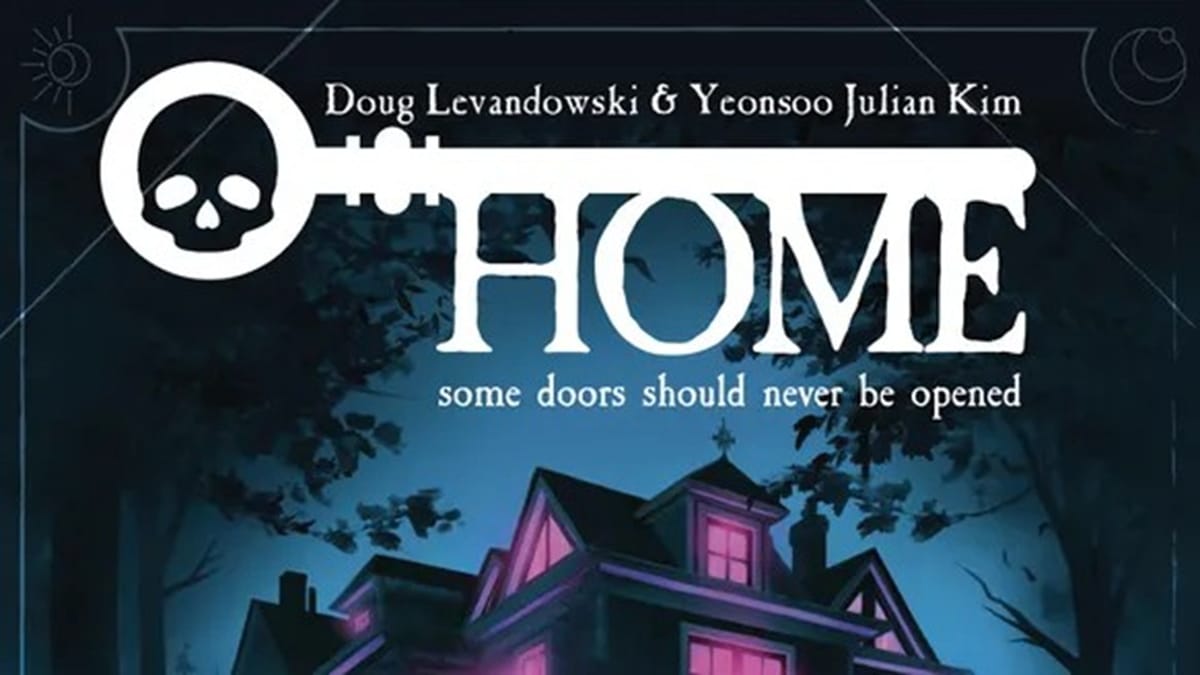
When I first inspected this quaint little box, I discovered that the full title of the game is: Home: The Haunted House Map Building Role Playing Game. That sure doesn’t quite roll off the tongue as well, but hidden on the front cover is the tagline: “Some doors should never be opened.” That’s a good tagline. A box for scary one-shot RPGs? I was like Alucard every time he went to the librarian in Symphony of the Night. (A total of one person might get my terrible joke.) With my attention firmly grabbed, I dove into this one-shot RPG box with some friends to see what lay within.
This Old House
What is Home? It’s a card-driven, game-masterless, one-shot TTRPG in a box. This is a lot of jargon just to say you’ll build a deck of cards to represent your journey through a haunted house, and you’ll draw from that deck to guide you through your session. If you’re familiar with Alice is Missing or The Quiet Year, this style of game is similar. It is nice that the game doesn’t require anyone to run it, as that means everyone involved gets to experience the game.
Inside the box, you’ll find a paper dry-erase board, five dry-erase markers, wound tokens, and a whole lot of cards. The core box contains five scenarios:
- Echoes of Childhood
- A Bite of Nature
- Time Distorted
- Blood Magic
- The Darkening Horizon
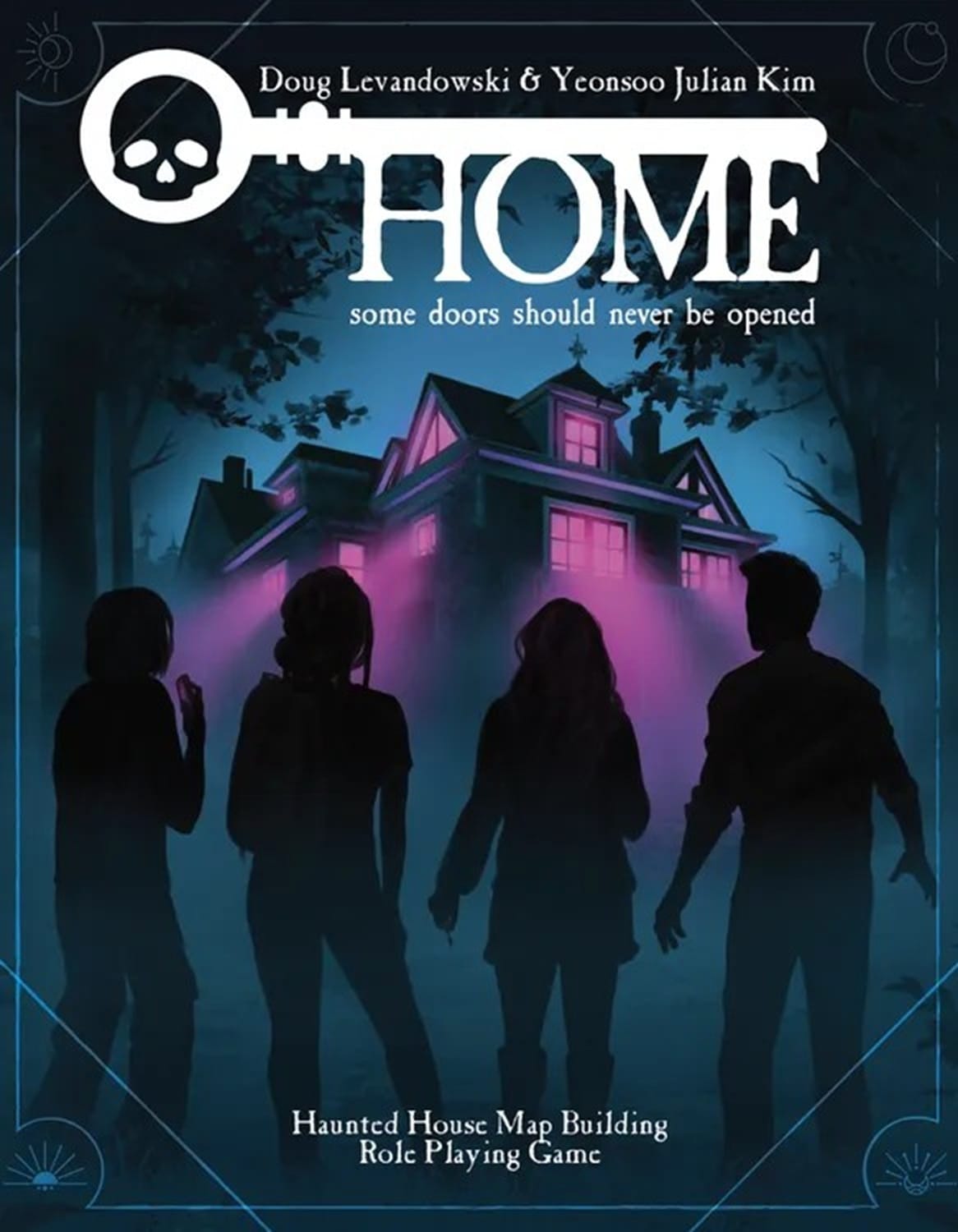
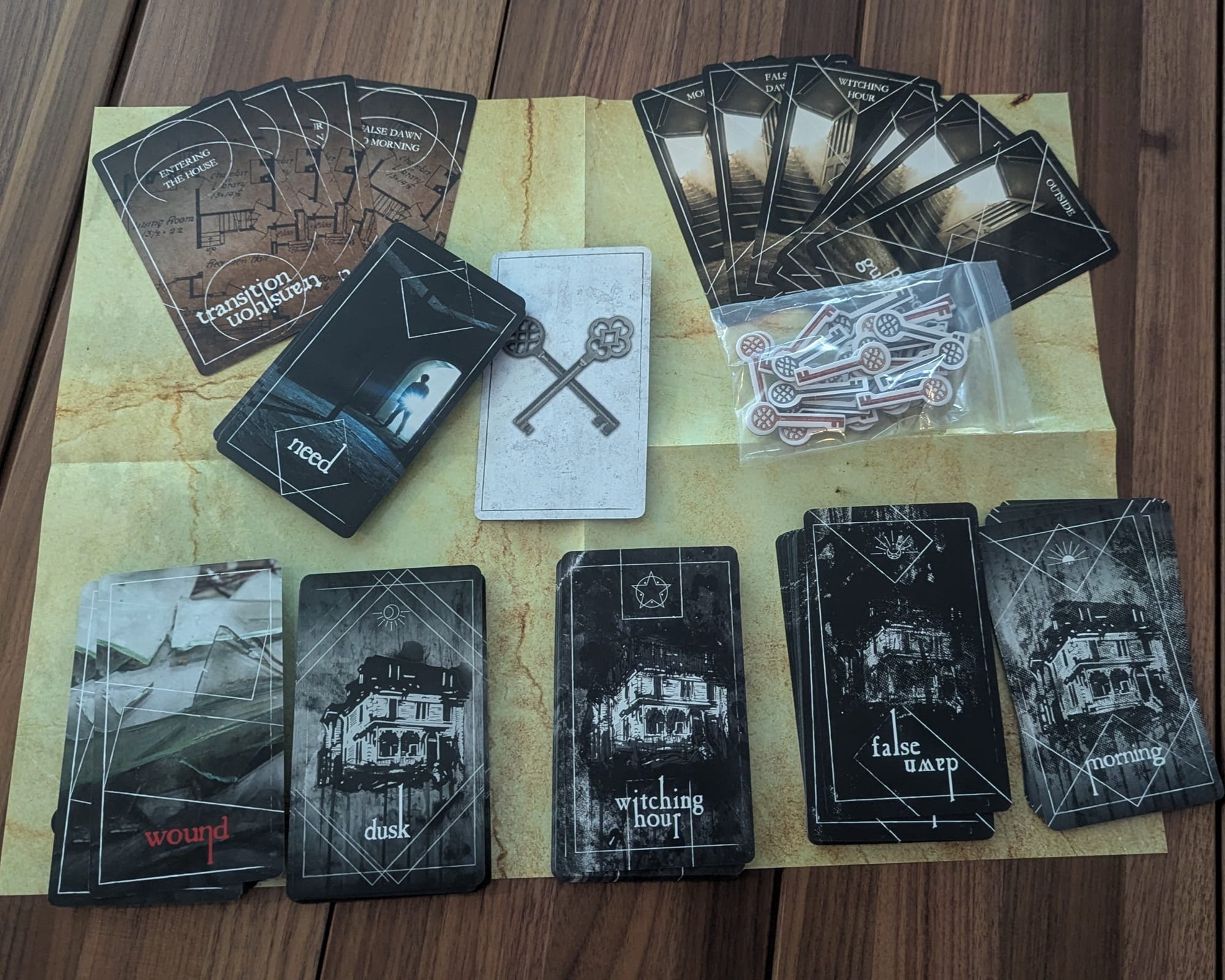
The basic components for Home.
Using the first scenario as an example, Echoes of Childhood is about exploring an eerily familiar house and how your past can come back to haunt you. Following through the rulebook, you learn how to set up the deck and how to play the game. There’s a bit of setup about how the group knows each other, but the vast majority of the game is played by drawing cards. You draw a card from the deck and narrate a scene about what you’ve found or what is happening. Other players can ask questions or add details, but when it is your turn, you are the final arbiter of what happens. Ultimately, the group is working together to tell the story of this house they’re exploring. Cards offer some details to help inspire you and can offer choices on what you’ve encountered. Cards can cause you a wound or even (rarely) heal an existing wound.
The cards are themed around certain times, such as dusk, midnight, or dawn. As the morning draws near, you will have to determine the fate of your character. Do they escape the house, or are they now a part of it forever? This can be determined by how many wounds your character has or by other factors. Though, as I’ve mentioned, this is a narrative game, and the story being told is determined by the group. My favorite game of Home ended up being about a young man facing his painful childhood, only to come face-to-face with the source of his pain. Home told a shockingly complete story for that character who ultimately escaped the house, leaving his past behind. Others in that group were not so lucky.
The first thing that struck me was how well-written the rulebook is. As this is a horror game, the rulebook takes the time to cover the potential horror themes and pitfalls that could come up with each scenario. The rulebook also does a great job of discussing how horror is different for everyone and that this is a collaborative experience. As a lifelong horror fan, I’ve accidentally shared my enthusiasm for horror with less-than-enthusiastic (about horror) friends. This rulebook is great for managing the discussion on what horror means for everyone in the game. From discussing what topics are off-limits to managing expectations, the rulebook contains a great walkthrough of how to keep a narrative-driven game on track for everyone.
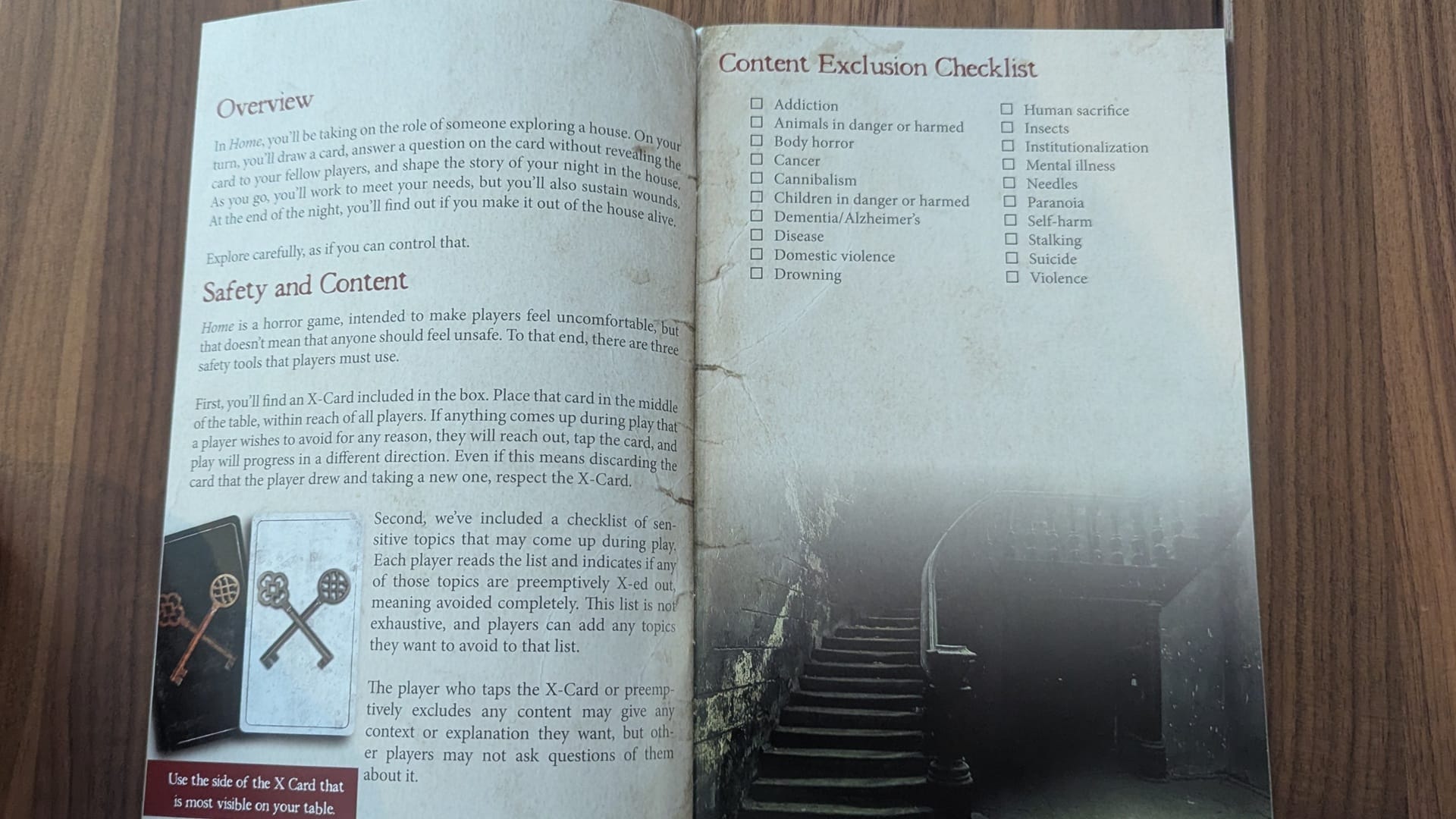
The high quality of writing extends to the cards too. While I haven’t played every scenario, I did spoil them by peeking at the cards. I would describe the majority of the prompts as thoughtful. To use a basic example, why is my favorite childhood toy here in this room, where it can’t possibly be? Everyone I played this game with had to take a moment to answer their prompts. You draw your card one turn ahead, while another player is narrating their scene. What that player narrates could change your thoughts. When it is your turn, you’re just trying to answer the prompt, but for everyone else, there’s a moment of tension. What did they find? I found that this really added to the horror element. As a storytelling game, Home is a fantastic vessel for telling something spooky.
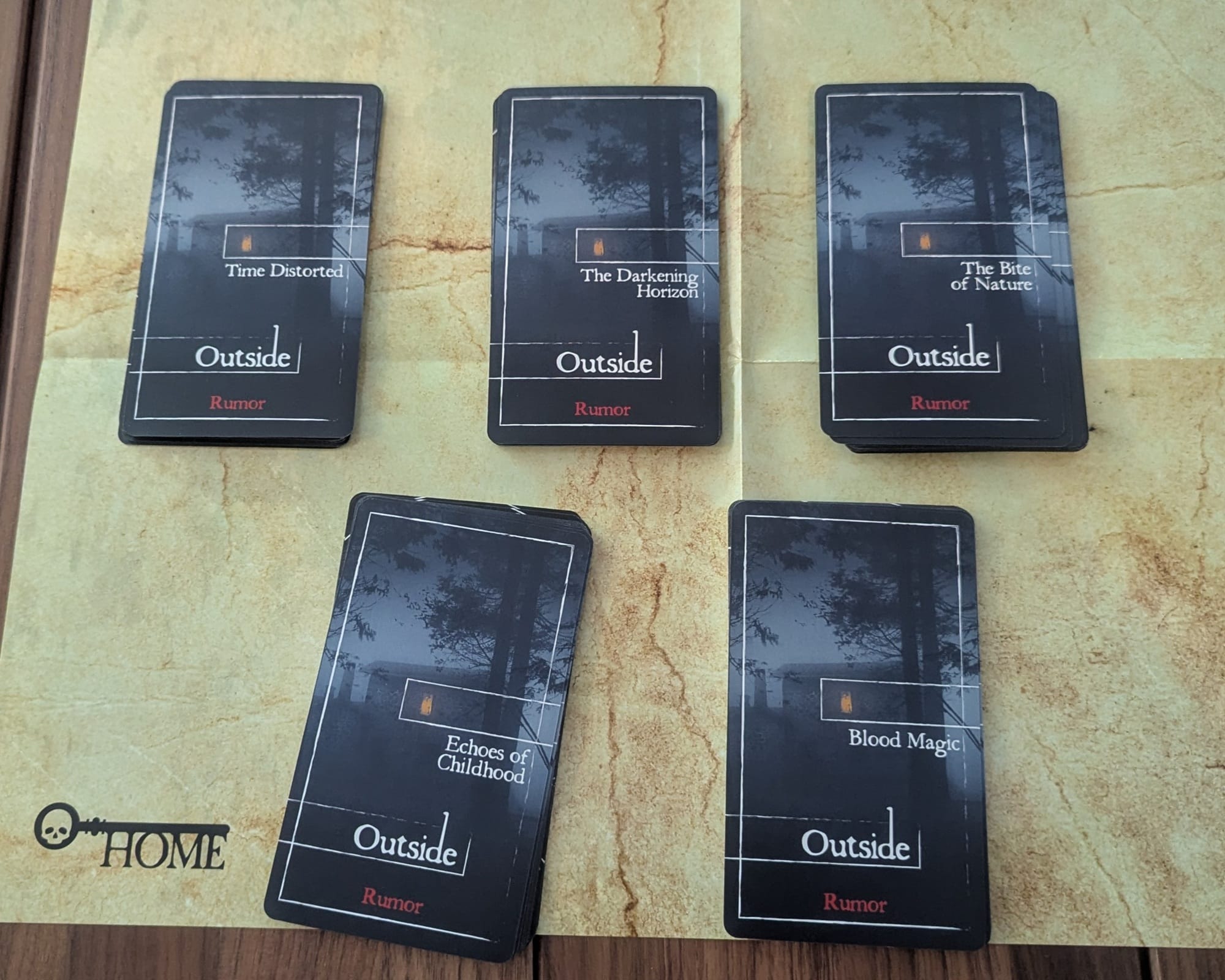
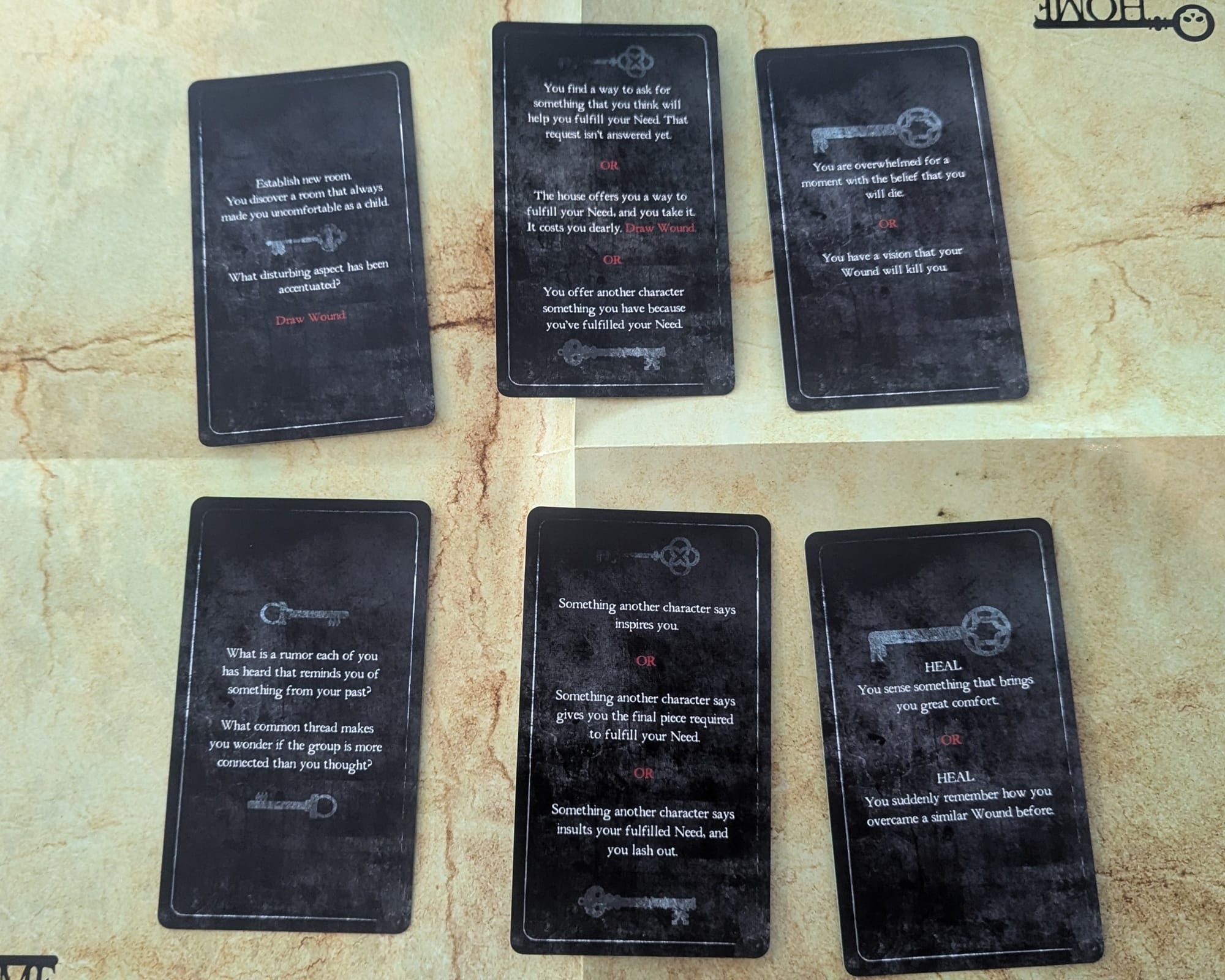
The five included scenarios and examples of cards found in various decks.
Stumbling Blocks
Not everyone is sold on improvisational style games. Home is absolutely reliant on improv. Along with that, the game is very group-dependent. Everyone plays RPGs for different reasons, and not everyone wants to be in the spotlight. Make sure your play group is ok with improving a lot when you sit down for a game with Home. At its core, Home is a storytelling game. If you’re looking for a way to practice those aforementioned skills, this is a great way to do so.
I mentioned the core box contains five scenarios, as there are additional scenario packs available. The rulebook covers everything available, and there’s a wide variety of themes. I particularly like the content note on The Dollhouse, “Content Note: Dolls.” I sure hope so; otherwise, I’m not sure what to expect. :) While I would have liked the core box to have more content, the scenario packs are a good compromise to add more life to the game.
Lastly,- this is a minor criticism - but in the games I played I felt like characters spent most of their time “establishing a new room”. While this is great for exploration and expanding the house, I wish there were more time spent ruminating on what the characters have already found. Sometimes, it felt like there wasn’t enough to soak in where we were, and the characters were always rushing off to other parts of the house.
Components
In terms of components, the game is fine. Nothing spectacular, but not bad either. The cards are nice quality. The paper whiteboard works ok, but if you have access to an actual whiteboard, I would use that instead. The paper whiteboard has to be folded up for storage, and that crease can cause minor problems when drawing out the house. I can understand why they didn’t try to cram a real whiteboard into the box. We never used the wound tokens as we used the cards to track wounds, so while those are a nice inclusion, they seem like an odd afterthought.
Home: The Haunted House Map Building RPG
Great
I really enjoyed my time with Home, and I hope to make it a staple of spooky season in years to come. I understand that the haunted house theme is doing a lot of major lifting in my enjoyment of this game, but this box is a great representation of what makes horror games fun. This is a great narrative adventure for those willing to improve and immerse themselves in their own creation. If you’re looking to tell some scary stories through your TTRPGs, I recommend Home takes breath The Haunted House Map Building Role Playing Game.
Pros
- Amazing rulebook
- Simple to play
- Improvisation required
Cons
- The dry-erase components are just ok
- Improvisation required. Yes, this is in both spots. :)
This review is based on a retail copy provided by the publisher.